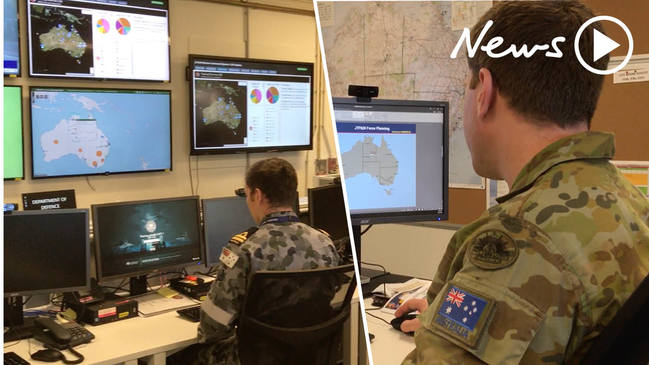Australian Defence Force use Cocos Islands to stop attacks from foreign threats like China
The Australian Defence Force is setting up a strategic forward operating base for one of the most advanced spy planes in the world to thwart attacks from foreign powers.

Exclusive: It might be a tiny coral atoll about 3000km from our coast but its strategic location will see the Australian Defence Force establish a forward operating base for one of the most advanced spy planes in the world.
The Cocos (Keeling) Islands in the Indian Ocean has been selected to house the RAAF’s much anticipated acquisition, the MC-55A Peregrine aircraft and its next generation airborne electronic spy warfare capability.
The islands played a crucial role during World War 2 when it housed a vital cable station and the famous “Y Service”, worldwide signals intelligence collection services for the Allies, and had airstrips for three RAF bomber squadrons.

But the horseshoe shaped islands’ relevance has been elevated again 75 years on for what Defence has described as one of the most challenging strategic environments in a generation with various China actions notably in South China Sea and in the Pacific perceived as a threat to regional stability.
The four Peregrines, modified Gulfstream G550 bought from the US at a cost of $2.5 billion, will be based at RAAF Edinburgh in South Australia but will use Cocos as a forward operating base as well as RAAF Base Darwin and RAAF Base Townsville.
To support air operations of the new aircraft, an air operations facility will be built on Cocos as well as an explosive ordnance bunker for self-protection flares the aircraft will be armed with, engineering services for power. Tenders for runway improvements are also already in motion.

In a report to parliament earlier this month, Defence infrastructure boss Brigadier Matt Galton said the Cocos move was a critical element of the 2020 strategic defence review to provide enhanced intelligence, surveillance, reconnaissance and electronic warfare capability that are integrated with the latest generation of weapon systems. These weapon systems include the P-8A Poseidon, the F-18G Growler, the F-35 Joint Strike Fighter and the future MQ-4C Triton remote piloted system.
He said given it was more than 2700km off Australia’s mainland the logistics challenge was “significant” but the actual infrastructure construction was not.

“The forward operating bases will enable Peregrine to project into Australia’s area of interest and perform its operational function,” he said.
An earlier defence report said Cocos could be used not just for security contingencies that threaten Australia’s north western approaches but also to cover maritime trade choke points of the Malacca and Sunda Straits and other major sea lanes about southern India and also support US “alliance commitments”.
“The incoming Peregrine capability will enable Defence to actively strengthen electronic warfare support to naval, air and land forces for operations in complex electromagnetic environments,” it concluded.

The Peregrine acquisition was specifically made to beef-up the RAAF’s electronic warfare capability but also increase interoperability between itself and the US Air Force. RAAF training on the aircraft is understood to already be underway in Texas.
Last week the government announced it would be bringing forward a $1 billion defence package including $300 million to upgrade RAAF Bases East Sale, Pearce, Amberley and Wagga, the Albury-Wodonga Military Area, Jervis Bay, Blamey Barracks in Wagga Wagga and another $190 million for various defence projects in the Northern Territory.

It has already also spent money on Los Negros Island in Manus province in Papua New Guinea with a refurbishment of a joint naval base that during World War 2 matched Pearl Harbour for ship capacity and 150,000 troops. Both US and Australian government moneys have already also been committed to RAAF Tindal upgrade in the NT, to assist US Air Force assets currently based at Guam. Darwin is seen as the US fallback position should Guam be attacked.
The ADF has formally adjusted its “Defence Warning Time”, developed decades ago for a highly classified intelligence-based prediction on a friend or foe’s military capabilities in our region, which has gone from 10-years warning advantage to now a matter of months.
